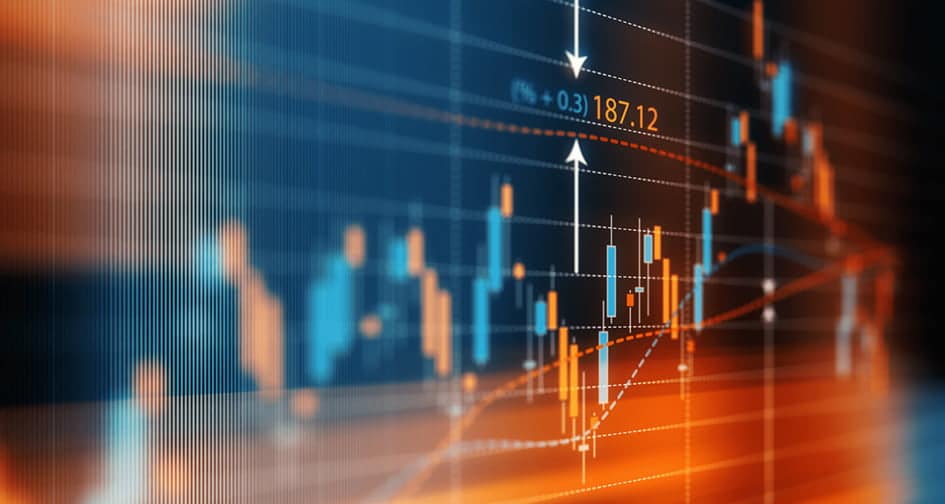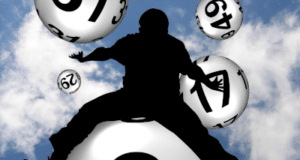Stock trading is one of the best ways to generate passive income and secure your future. You don’t need to own a product, service, or company to become a trader, all you need is knowledge about trading, a reliable platform, and you have some money for investing. Keep in mind that stock trading isn’t a get rich quick scheme. It’s a legitimate profit-making investment that also comes with risks. If you know how to trade and you happen to be lucky, you can make enough money from the stock market to never work again. If you’re unlucky and you make a wrong move, you can lose everything you have. You don’t need to be intimidated, all you have to do is learn as much as you can about the stock market before you start investing. First things first, you need to learn the common stock market terminology.

Trading Definitions Every Stock Trader Needs to Learn
1. Bear Market
In the trading world, a bear market is categorized by a fall in stock prices, low expectations from investors, and pessimism. Depending on the intensity of the bear market, it can be a good or bad thing. Short-term, a bear market allows people to buy stocks at favorable prices and make a profit when there is a price recovery. Short sellers benefit significantly from the stock market but long traders don’t enjoy extended bear markets since they may lose a significant portion of their profits if the market doesn’t recover. Overall, an extended bear market isn’t good for anyone.
2. Bull Market
The bull market is the opposite of the bear market. During a bull market, stock prices are expected to rise and there is a positive vibe in the market. There are high expectations from investors and everyone expects to benefit from the bull market. While the bull market is great for already existing traders, it’s not the best time to buy new stock. This is because the prices are usually higher and buying might not be profitable when they stabilize or drop.

3. Ask, Buy, Sell and Bid
These terms are all self-descriptive: Ask is the amount people require for their stock, Bid refers to the amount the buyer is willing to sell, and Buy refers to taking a position and purchasing the shares. Sell refers to leaving the position and selling the stock to an interested buyer. Most traders sell when they reach their goals or when the market is bearish and they want to cut their losses. Some sell when they are ahead to prevent accumulating more losses. The difference between the buy price and the selling price is referred to as the bid-ask spread. Traders might resolve the bid-ask spread before they can finalize the transaction.
4. Dividend
The dividend is the profit from a company that is paid out to all shareholders. Your dividend will depend on your number of shares in the company. The more shares you have, the higher your dividends. Dividends are typically paid out annually, bi-annually, or quarterly depending on the companies policies. Keep in mind that nor stocks offer dividends. In that case, you will only profit when you sell the stock at a higher price than you purchased it.
5. Margin and Moving Average
In the stock market, the margin is a feature on an account that allows traders to purchase an investment with a loan. It is the difference between the loan and the price of the security that is called the margin. The moving average is the cost per share of a stock during a given time. Its usually calculated in 50, 100, and 200 days. So, when you hear something like 50-day Moving Average or 100-day Moving Average, you’ll know exactly what they are talking about.
6. Trading Volume, Liquidity, and Volatility
Trading volume is quite self-explanatory. It is the number of shares that are sold across exchanges daily. The liquidity of an asset refers to how quickly you can sell or buy it. Assets with high liquidity can be sold or bought quickly but assets with low liquidity are difficult to sell or buy. The trading volume of stocks often affects their liquidity. Volatility in the stock exchange is the same as volatility anywhere else. It refers to how quickly the price of an asset changes. Cryptocurrencies are said to have high volatility because their prices can go from 0 to 100 within a few minutes or hours in a day.
7. Mutual and Hedge Funds
Mutual funds are among the lowest risk funds in the world. They are usually managed by a company that helps you make purchases across various investments. So, instead of buying from different companies at the same time and monitoring each one for progress. All you have to do is give some money to an investment firm and allow them to do the selection for you. All the shares will be monitored through a single portfolio. The yields for a mutual fund are usually lower than when you invest in individual companies on your own but the risk is lower. Another type of investment that is similar to a mutual fund is the hedge fund.
8. Forex, Blue Chip Stock and ETF
This one is simple, even those who don’t know anything about trading know what forex exchange means. It simply refers to buying and selling currencies rather than securities. Blue-chip stocks are shares from big shots across industries. The price of these shares is high but their dividends are stable and large as well. A typical example is the S&P 500. ETF, on the other hand, is an acronym for exchange-traded funds. These funds are like a combination of stocks and mutual funds. They track indexes.
9. Market Order, Limit Order, and Execution
The market order in trading in trading is the set of instructions that come when it’s time to execute a trade. The order limit comes with stocks that are to be sold under a given amount. Professional traders prefer to limit orders to market orders because they help minimize risks. Execution is the word used when an order has been completed successfully. It doesn’t matter if its a buy or sell order. You can say it has been executed successfully when both parties have been satisfied.
10. Public Float, Secondary Offering, and IPO
Not all the shares in a company are made public for everyone to purchase. Some of these shares are controlled by insiders while some and left for public purchases. A public float in trading refers to the shares that are available for public purchases. IPO is an acronym for “initial price offering”. It is an event that occurs when a private company goes public. During an IPO public floats are made available for anyone interested. The funds that are realized during the IPO are used to expand the company and improve its ecosystem. Another method of raising money is through secondary offerings. Companies that are highly profitable use secondary offerings to boost share sales and raise funds. It can come years after the first IPO.
11. Exchange, Averaging Down and Going Long
You probably already know this but an exchange is a platform where assets are bought and sold. There are many exchanges across the globe but not all of them are reliable. The two most popular exchanges in the world are Nasdaq and the New York Stock Exchange. These two exchanges getter a significant daily volume. When you’re averaging down on an exchange it means you’re buying more tokens than usual because the asset prices are lower than expected. It’s a good way to make a profit. Going long is what most traders do when they are interested in long-term profit-making. They buy assets, hold, and sell when the prices rise.
12. Stock Symbol and Quote
Each publicly-traded company has a unique stock symbol that represents their name across exchanges. It is also called a ticker and if is usually an alphabetical symbol. For example, the ticker for the New York Stock Exchange Is NYSE and each company that is listed on it has its ticker added to it. You have NYSE: E, NYSE: AXJ, NYSE: AFT, and NYSE: AHH. On the New York Stock Exchange and other exchanges, the Quote refers to the trading price at any one time. It is usually in real-time but can be delayed by 5 to 20 minutes.
Bottom line
These are just some of the trading terms you should learn before you start trading and the list goes on. Learn as many as you can before you start learning how to trade. It is the first step.




